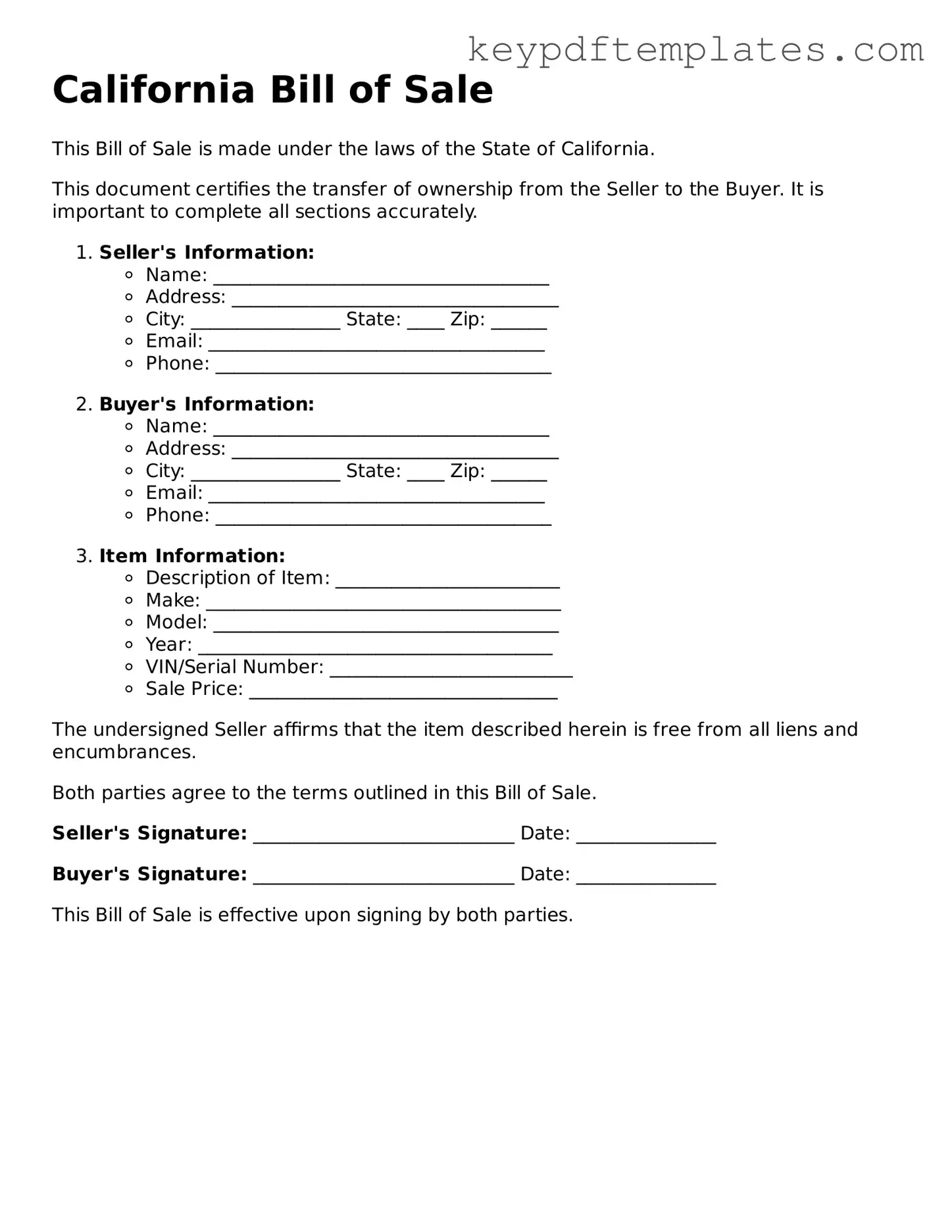Legal Bill of Sale Document for the State of California
A California Bill of Sale is a legal document that serves as proof of the transfer of ownership of personal property from one party to another. This form is essential for both buyers and sellers, as it provides a record of the transaction and details about the item being sold. Understanding the key components of this document can help ensure a smooth transfer process.
Modify Document Online
